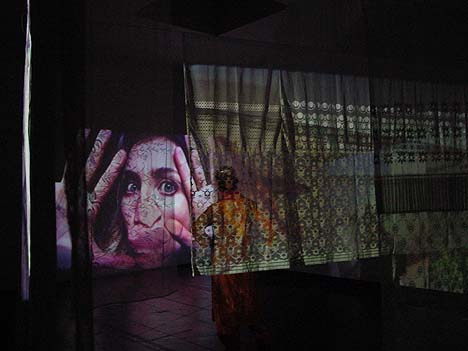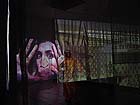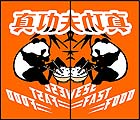
translated and summarized by: Liz Wollner-Grandville,
English summary May 13 - 19
Louvre: Jan Fabre
Renaissance revisited
Louvre’s innovative program “Counterpoint” offers contemporary artists the opportunity to set their work in a dialogue to the permanent collection of the museum. Visitors are encouraged to see works by masters such as van Eyck, Bosch and Rubens, through the eyes of a major contemporary artist.
This time the Louvre has invited the Flemish artist Jan Fabre, born 1958 in Antwerp. His retrospective will be shown in the Richelieu Wing until 07 July in the midst of masterpieces of the Écoles du Nord, ranging from Bosch to Rembrandt.
Fabre launched his career in the late 1970s with performances and became a shining star of the Flemish art scene in the 1980s. He participated in the prestigious Dokumenta 9 in Kassel as well as all major biennales. He founded the theatre company Troubleyn in 1986 and frequently performs at leading European venues, most recently at the Salzburg Festival. In 2005 he directed the Avignon Festival, paints, choreographs, produces videos and performances.
Fabre attends to major topics: life and death, sacrifice and resurrection, the opposition between humans and animals. In real life the artist comes across as a cunning and not at all as a metaphysically distanced person – something his works might suggest.
Fabre developed a narrative mesh of metaphors and chimeras, sculptures and self-portraits, related to the range of 14th century artwork to Peter Paul Rubens’ baroque bodies. Above all his fetish, the scarab beetle, which to him symbolizes metamorphosis, beauty, vanity and aloofness, is applied in many different ways.
Jan Fabre's world is not free of declamatory features and kitsch, but his view of the past and his cross connections are intriguing and motivate visitors see the old masters in a new light.
Louvre
Paris, until 07.07.2008
www.louvre.fr
Thyssen-Bornemisza Art Contemporary T-B A21: Other than yourself – An investigation between inner and outer space
Topics, theses & talents
What is the basis of a good collection? Stringency? Topicality? Diversity? And if the collection itself is already successful, what are the foundations for a successful exhibit of such a collection? Does one prioritize the topic, come up with a thesis or rely on names that are currently on the hot list?
“Other than yourself – an investigation between inner and outer space” is the title of the current exhibit at the Thyssen-Bornemiza Art Contemporary. The curator of this show has obviously dealt with contrasting themes, juggled with well-known and newly acquired pieces of the collection, and seemingly en passant conjured Mickhail Bakhtin as the appropriate theoretician for these kinds of dialogue actions - thereby fulfilling the presuppositions of a successful exhibit.
Not all of the works shown here, including Roman Signer’s daring helicopter attacks or Hans Schabus’ rather contemplative sewer paddle trip are able to encapsulate the topic. This is, however, achieved by Ján Mancuska with “The Other” as well as by Emanuel Damesch and David Rych. Finally, Boris Ondreicka enables the borderline between inner and outer, upper and lower, private and public, floor and wall, to speak for themselves.
Thyssen-Bornemisza Art Contemporary T-B A21
1010 Vienna, Himmelpfortgasse 13/9, until 21. 09. 08
www.tba21.org
Tate Modern: Duchamp, Man Ray, Picabia
Tertium comparationis
The London Tate is currently not only exhibiting the probably most paradigmatic artist of the 20th century - besides Picasso – it also flanks him with two immensely important representatives of the avant-garde, draws attention to each one of them individually as well as in relation to one another, enables half a century of art to “simply pass by” – and what does the British press do (at least part of it)? It moans. And laments. “Too many blockbuster exhibits”. In light of this exhibit one can only shrug this off as “lamenting on the highest level”. Tu felix Britannia.
On account of the sheer abundance of the exhibited works, one could admittedly lose track of things and give up “seeing” and merely “look” at the exhibited pieces. The dry museum-like presentation cannot meet the expectations of the formerly subversive and shocking quality of these works. But when one stands in front of such icons as Duchamp “Nude descending a staircase” (1912) or his “Large glass” (1915 – 23) or, for the first time in Europe – his “Etant donnés” (“Being given” 1946 – 66), even if it is only shown in its virtual form, as the original is permanently installed in Philadelphia.
The exhibit also calls for a comparison among the three artists and undoubtedly makes it clear who is the greatest star among them. No surprise – it is Duchamp. His “Nude”, the perfidious-voyeuristic installation “Etants donnés”, with which nobody counted any more, since they all thought that from now on Duchamp was only going to be a chess player, and the “Glass”, with which he drove the machine aesthetics to unimagined erotic, and later interpretational, climaxes, invented the concept of the “readymade”, which presents an everyday object as an artwork and substantially incited the gender twist with his alter ego Rrose Sélavy. Against all of this – even if the foregoing description may only adumbrate his work – Man Ray’s photograms, for which he is probably best known, and Francis Picabia’s shameless poaching in the styles and artworks of others, which all the same made him to a post-modern avant la lettre, looks rather moderate in comparison. Relatively speaking, of course.
Tate Modern
SE1 9TG London, Bankside, until 25.05.08
www.tate.org.uk/modern/
Galerie Grita Insam: Ken Lum – Shopkeepers Rorschach
Mirrored reflections
The internationally renowned Canadian artist Ken Lum is currently displaying his most recent work at the Grita Insam Gallery. “Shopkeeper’s Rorschach” shows large-scale Giclée prints on canvas, depicting mirrored advertisements of Chinese fast-food restaurants, pizzerias, or tire companies. Lum does not choose big names such as Coca Cola or McDonald’s, but ads for local companies, which he comes across during his voyages around the world.
In the year 2000/01, huge photographs by Lum, printed onto large plastic planes and affixed to the backside of the Kunsthalle on Vienna’s Karlsplatz were displayed. They showed people from different ethnic backgrounds to which sentences such as “Go back to where you come from! Why don’t you go home?” were assigned. The sentences were arbitrarily interchangeable and either stood in contrast to the people depicted or highlighted their habitus. With this work Lum clearly made the dubiousness of the term “home” visible; he displayed it a neuralgic public venue in the middle of a large city.
In 2008 he is transporting something which is seen in the wider public – advertisements – into artistically abstracted prints and displays his work in the context of a private gallery. While text plays an important role in his 2001 / 01 work, it only has a marginal share in “Shopkeeper’s”. The mirror effect makes the text on the advertisements practically undecipherable: “The Palace Boots Shoes” become “Pai Bo Sho”. The question arises if language is at all relevant in this connection. And he further abstracts the picture by applying a “Rorschach test” an evaluation method used in psychology. Is it Ken Lum’s intention to confront the viewer with an “irritating method” and to motivate him to associate his thoughts freely? Or are his works quotations of a globalized public, whose (advertising) codes are so diverse, that we are no longer able to differentiate them?
Galerie Grita Insam
1010 Vienna, An den Hülben 3, until 21. 06. 08
www.galeriegritainsam.at
Mehr Texte von translated and summarized by: Liz Wollner-Grandville


 Teilen
Teilen



